

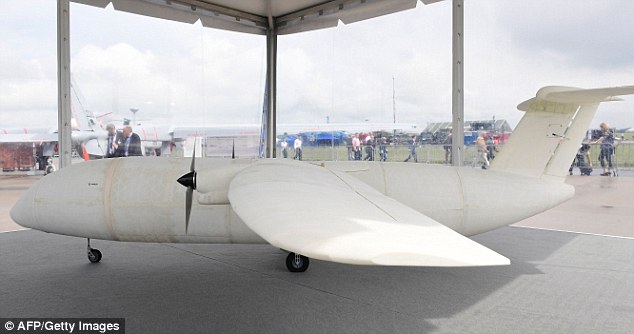
Thor is a windowless drone that weighs in at 46 pounds (21 kilograms) and is less than four metres (13 feet) in length, looking more like a model airplane than the jets we would normally recognise.
3D printing technology is fast evolving, with companies now producing objects ranging from castles to lawn mowers.
But until now, no one has been able to print a 3D airplane that flies.
Now, European aerospace company, Airbus, has created a mini-plane, named Thor, which is the world's first 3D printed aircraft.
The mini plane was presented at the Berlin air show this week.
Airbus have named the aircraft Thor - which stands for 'Test of High-tech Objectives in Reality.'
Thor is a windowless drone that weighs in at 46 pounds (21 kilograms) and is less than four metres (13 feet) in length.
Speaking at the International Aerospace Exhibition and Air Show, Detlev Konigorski, who was in charge of developing Thor, said: 'This is a test of what's possible with 3D printing technology.
'We want to see if we can speed up the development process by using 3D printing not just for individual parts but for an entire system.'
Despite its model-like appearance, the small pilotless propeller aircraft is a first in aviation technology, and could give a glimpse into a future where 3D printing technology could save time, fuel and money.
The aircraft is completely 3D-printed, except the electrical elements, which are built from a substance called polyamide.
According to the plane's chief engineer, Gunnar Haase, the plane 'flies beautifully, and is very stable.'
Both Airbus, and their rival, Boeing, are using 3D printing to make parts for some of their planes, such as the A350 and B787 Dreamliner.
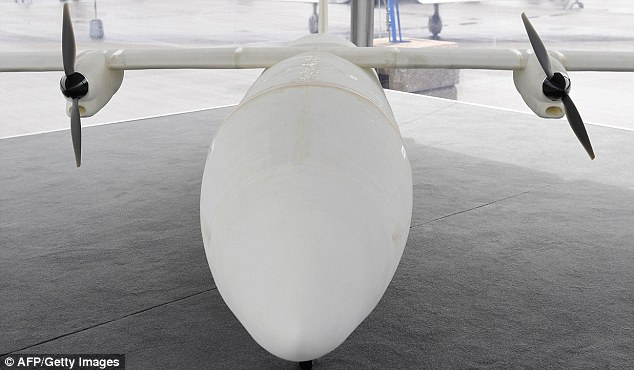
Despite its model-like appearance, the small pilotless propeller aircraft is a first in aviation technology, and could give a glimpse into a future where 3D printing technology could save time, fuel and money.
Speaking to AFP, Jens Henzler, managing director of Hofmann Innovation Group, said: 'The printed pieces have the advantage of requiring no tools and that they can be made very quickly.
'The metal parts produced can also be 30-50 per cent lighter than in the past, and there is almost zero manufacturing waste.'
However, 3D printing does not stop with planes - engineers are also looking to use it in space.
The European Space Agency (ESA) are planning to launch their Ariane 6 rocket in 2020, which is set to feature 3D printed parts.
Partially as a result of this, the Ariane 6 may have half the price tag of its predecessor Ariane 5.
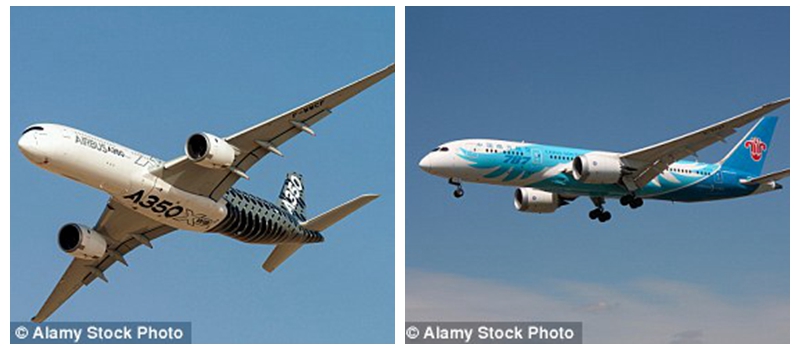
Both Airbus, and their rival, Boeing, are using 3D printing to make parts for some of their planes, such as the A350 (left) and B787 Dreamliner (right).
The new 3D printers can make pieces up to 40 centimetres (15 inches) long and is of most use in particularly complex designs.
As well as saving time and money, 3D printing also has ecological benefits.
Lighter jets use less fuel than the traditional heavy jets, and this means they produce fewer pollutants into the atmosphere.
Air traffic is expected to double in the next 20 years, so a quick solution to reducing carbon emissions in aviation is vital.
A survey by Bitkom of 102 people working in the aviation sector showed that many of them believe 3D printing is the future of the aircraft industry.
In fact, 70 per cent of respondents believed that by 2030 aircraft spare parts will be printed directly at airports, and 51 per cent expect that entire planes will by then be manufactured by 3D printing.
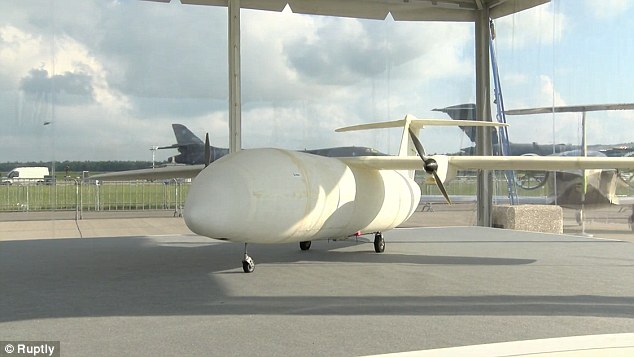
The printed airplane has the advantage of requiring no tools and can be made very quickly.
Day|Week

 China's first intelligent security robot debuts in Chongqing
China's first intelligent security robot debuts in Chongqing A Total of 3,552 Subscribers Vanish In Two Days; YouTube Closes All Doors to Users’ Inquiries
A Total of 3,552 Subscribers Vanish In Two Days; YouTube Closes All Doors to Users’ Inquiries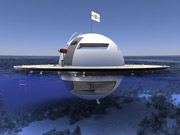 Out of this world! Futuristic UFO-shaped yacht has its own garden and a stunning underwater viewing deck
Out of this world! Futuristic UFO-shaped yacht has its own garden and a stunning underwater viewing deck An old tea house in Chengdu
An old tea house in Chengdu Furious Customer Crushes All the Buns from Vendor Just Because He Was Given the Wrong Flavor
Furious Customer Crushes All the Buns from Vendor Just Because He Was Given the Wrong Flavor 20 post-90s couples hold ’naked marriage‘ in E. China
20 post-90s couples hold ’naked marriage‘ in E. China Female official wearing traditional Han costume to promote local tourism
Female official wearing traditional Han costume to promote local tourism Over 12,000 Runners Seek Medical Care in S China’s Marathon
Over 12,000 Runners Seek Medical Care in S China’s Marathon Six Luxury Sports Cars Totaled after Fail Attempts to Cross China’s Most Perilous Highway Linking SW China’s Sichuan and Tibet
Six Luxury Sports Cars Totaled after Fail Attempts to Cross China’s Most Perilous Highway Linking SW China’s Sichuan and Tibet Incredible Transformation: “Witch Child”Whose Parents Left Him for Dead in Nigerian Makes Speedy Recovery
Incredible Transformation: “Witch Child”Whose Parents Left Him for Dead in Nigerian Makes Speedy Recovery